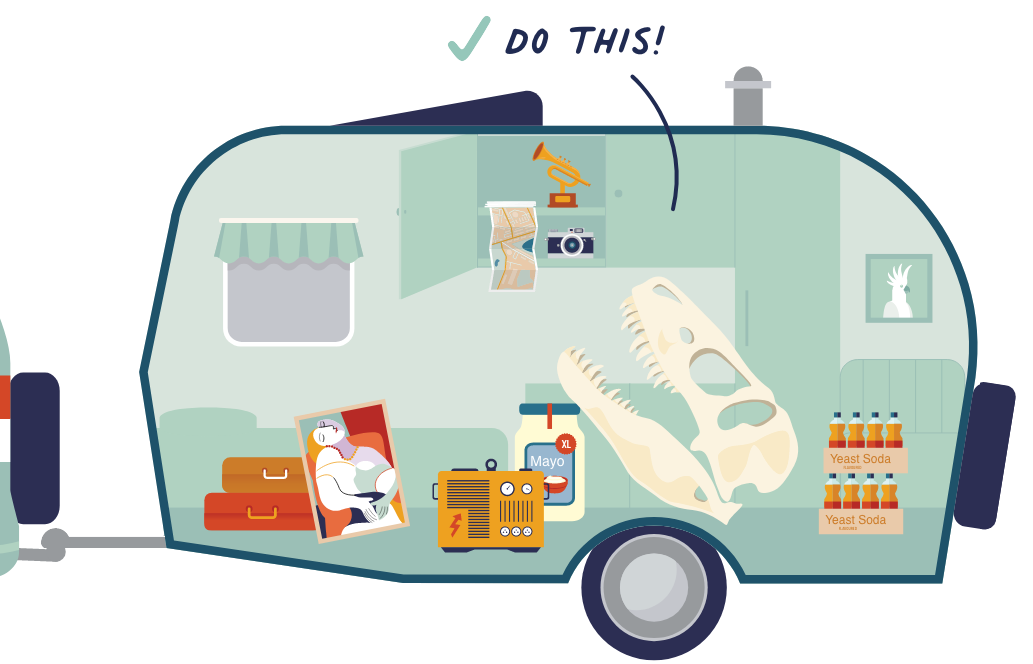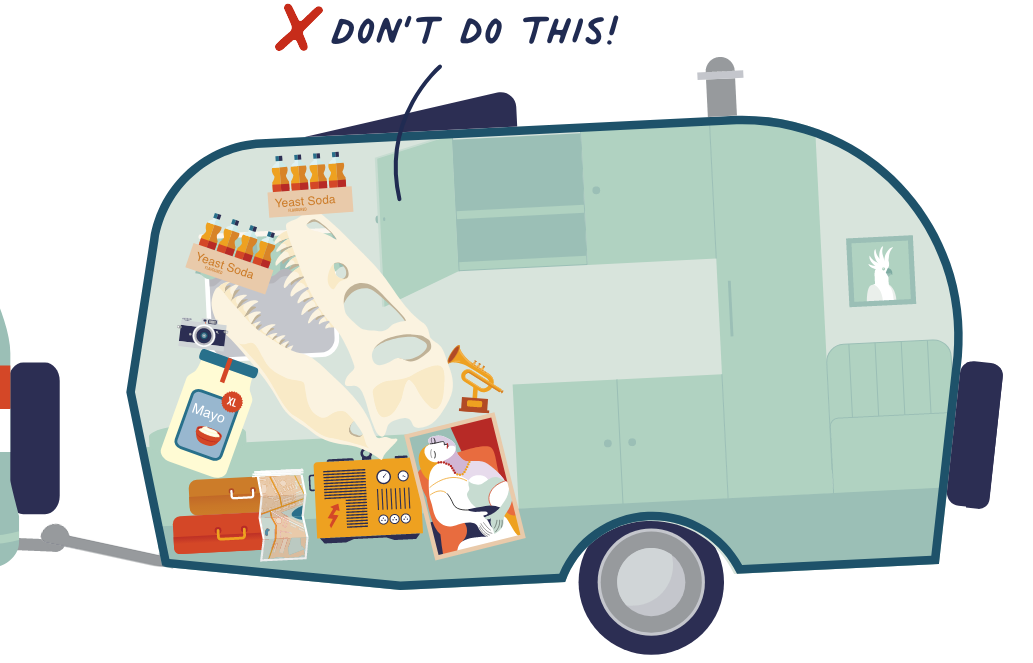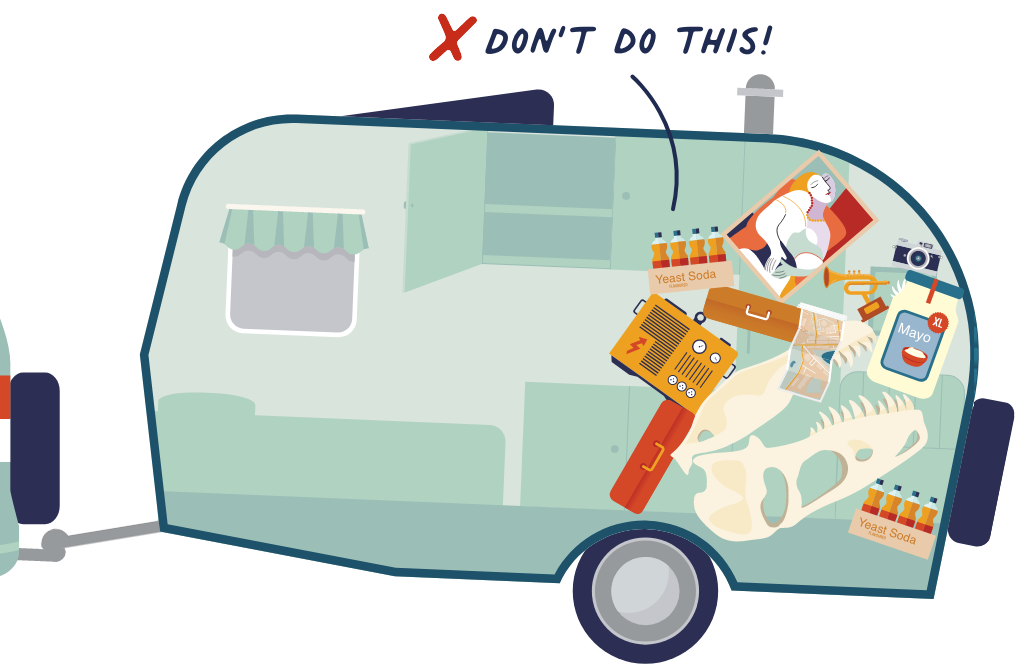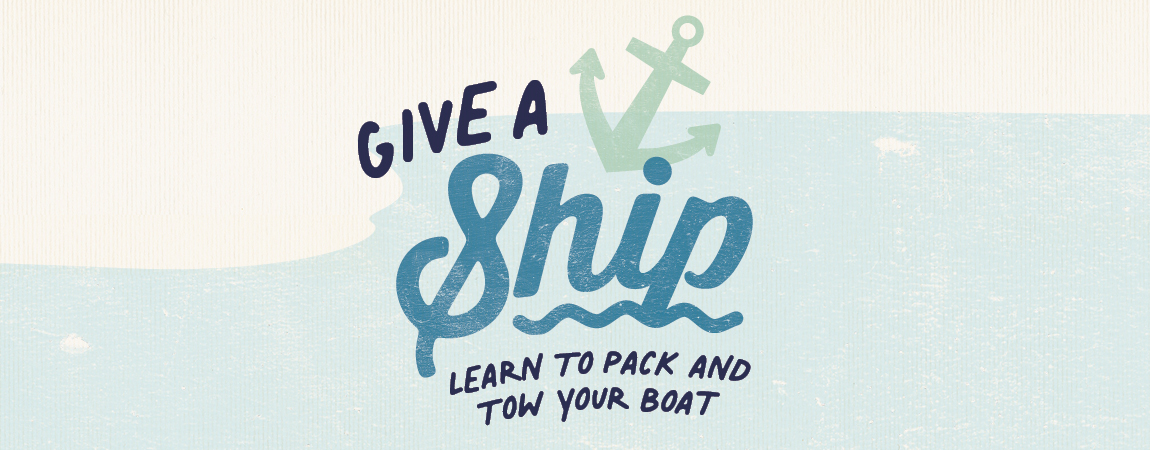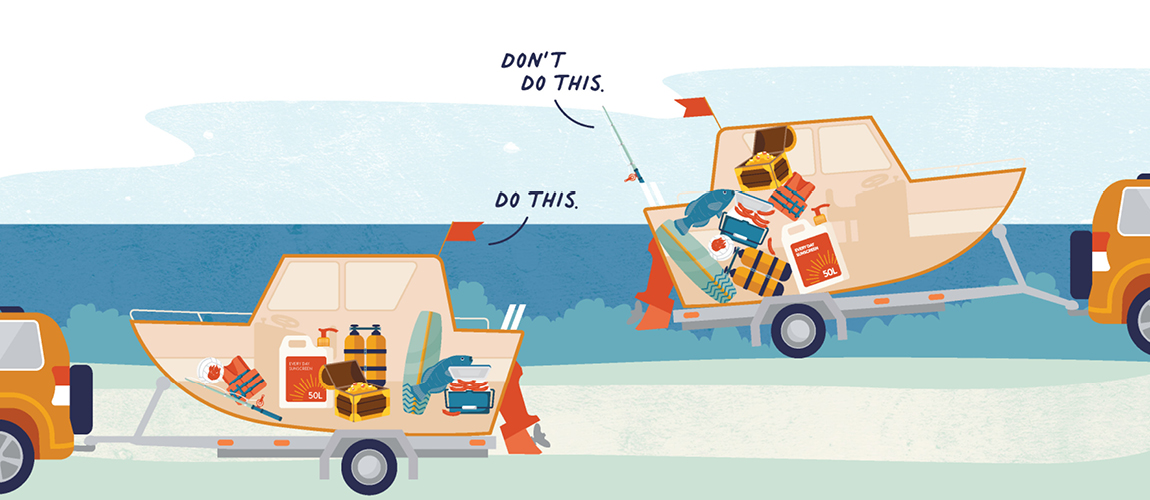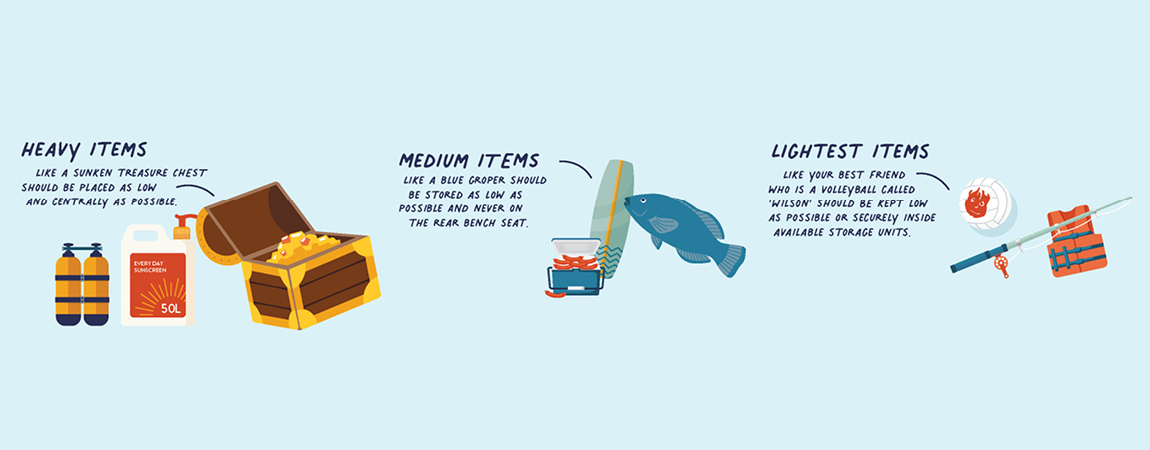There are specific road rules that apply to motorists towing caravans, camper trailers, horse floats, boats and more:
- The maximum legal speed limit for any vehicle towing a trailer or caravan is 100km/h.
- Vehicles towing a caravan or trailer must drive at least 60m behind heavy vehicles or other towing vehicles, unless overtaking. Drivers of road trains or B-doubles must maintain a following distance of at least 200m, unless overtaking.
- People are not permitted to ride in a trailer or caravan that is being towed.
- Failure to properly secure a load will attract a $150 infringement.
- If you are towing a load wider than your vehicle, you must have towing mirrors in place.
You must not drive a vehicle that is carrying a load:
- If the load makes the vehicle unstable or otherwise unsafe.
- If the load projects from the vehicle in a way that could injure a person, obstruct the path of other drivers or pedestrians, or damage a vehicle or anything else (including the road surface).
- Unless the load is restrained on the vehicle so that the load, or any portion of it is unlikely to fall or become dislodged from its restraints.
Be sure you know the legal load limit for your vehicle and make sure your load is well secured as incorrectly secured loads can cause rollovers.
Add 200kg to the weight shown on the vehicle licence paper to allow for bedding, travelling gear, stores, and equipment.
Be courteous in sharing the road with other users. Check your rear vision mirror regularly to see if traffic is building up behind you. If you are holding up traffic, pull over and stop when it is safe to do so. There are 1,648 Main Roads WA rest stops and amenities around WA to avoid fatigue.
If you wish to drive on unsealed roads in remote areas, ensure that your caravan or camper trailer is built to handle these tough conditions (check with the manufacturer). Make sure it has four-wheel-drive tyres with a high clearance and upgraded suspension that can withstand corrugations and rough road surfaces.
Caravans
Believe it or not, there is a right and a wrong way to pack your caravan. The latter can lead to building a fruitful relationship with your insurance provider, while the former will lead to a holiday that’s remembered for all the right reasons. Naturally, the information on this site is general in nature and should not be used as a substitute for professional advice or training – which we very much recommend!
The key is to place most of the weight over the axles, followed by the front of the van and finally the rear. Of course, there is more to consider such as not exceeding the maximum load specified by the trailer manufacturer, so be sure to seek professional advice before hitting the road.
Just like the ballast on a ship, the lower the centre of gravity, the more stable the caravan
Going caravanning? Make sure you check out our Give a Caradamn pre-travel checklist!
Before purchasing a caravan or trailer, it’s critical you give careful consideration to your vehicle’s towing mass and construction prior to purchase. The towing mass (or towing rating) is found under the towing section in the vehicle manufacturer’s handbook. The rating will include a trailer weight capacity and a trailer ball weight capacity, both of which must not be exceeded.
Van Chat
In this two-part video series Graham Cawley from the Motor Trade Association of Western Australia covers the basics of towing with novice caravanner Adrian Alaberg. Graham offers handy tips and simple rules to follow on the road to help you remember your road trip for all the right reasons (and none of the wrong ones).
Boats
Boating safety starts before you leave home with the boat in tow. Whether you are travelling a short distance or on a longer trip, towing your boat requires preparation, practice and vigilance. There are legal requirements regarding maximum towing capacity. This is based on the car and the towing hitch. Check that you are within the limits. Towing puts extra demands on your vehicle, particularly on its cooling system and brakes. Vehicle manufacturers may also recommend higher tyre pressures in the rear wheels when towing. This information can be found in the vehicle’s handbook.
Make sure you also check out the Give a Ship pre-travel checklist!
Weight distribution and loading
Show moreThe best way to avoid your boat developing its sea-legs while being towed is by correctly loading it. This means getting the centre of gravity low as possible with weight evenly distributed.
As well as bow-to-stern weight distribution, you should also consider starboard-to-port load distribution.
Just like the ballast on a ship, the lower the centre of gravity, the more stable the trailer
Some vessels have side-mounted fuel and/or water tanks, so keep this in mind when filling them! Another way to keep your boat well-balanced is by storing any equipment at floor level – so make sure those scuba tanks (or priceless seafloor treasures) are on the floor inside the cabin between the bunks and NEVER on the rear bench seat.
A balanced trailer won’t just provide the best on road handling – it’ll also prolong the life of your trailer’s tyres! Of course, there is more to consider such as not exceeding the maximum load specified by the trailer manufacturer, so be sure to seek professional advice before hitting the road.
Pre-trip checklist
Show moreBefore you embark on your journey, check out the pre-travel checklist (PDF 11.2MB) and take a moment to do the following checks:
- Pack the boat carefully, spreading the load evenly with heaviest items over the axle/s in the centre. Keep the contents secure so they don’t move around and affect the vehicle’s handling and safety.
- Check and tighten all tie-downs – front, rear and side.
- Check that the coupling and safety chains are secure.
- Test the trailer’s lights to ensure they’re all working.
Trailer checks and maintenance
Show moreWhile your boat is in the water, take a moment to do the following:
- Check trailer frame (bends, joints and springs) for wear, cracks, and damage.
- Inspect the rollers to make sure they are rotating freely.
- Tyres should have plenty of tread and be in good condition.
- Ensure wheel nuts are properly tightened and check tyre pressures.
- Wheel bearings should be in good condition and well-packed with lubricating grease. Signs of wear or corrosion means they should be replaced.
- Check condition of towing hitch and safety chains.
- Check that the towing ball on the car hitch is secure.
- Check the winch cable or strap and the safety chain.
- If the trailer has a braking system, ensure it’s in working order and top up fluids if required.
- Check the lights and view them for correct operation, including the brake lights and indicators.
- Flush trailer brakes with fresh water to prevent rusting brake rotors.




